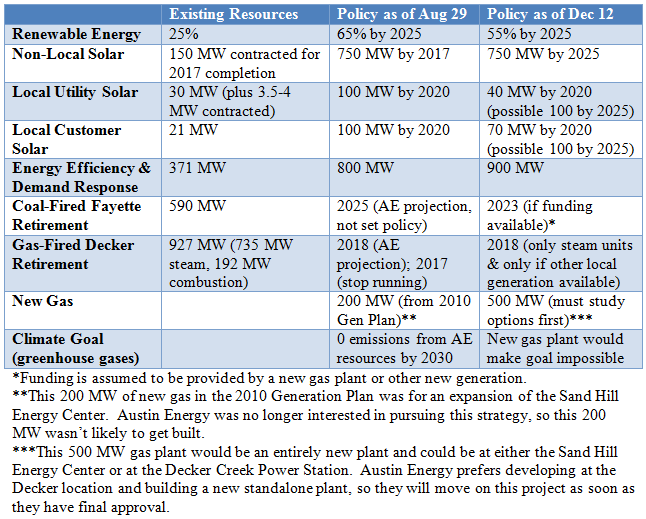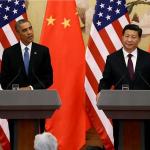Posted in Global Warming | Tagged Texas |
The Austin City Council’s vote last night to adopt the Austin Energy Resource, Generation and Climate Protection Plan to 2025 brought to an end a year’s worth of work by numerous advocates and engaged members of the public.
While the result was disappointing, I find myself being immensely grateful for the many people who took time out of their schedules to stand up in support of the strongest renewable energy, energy efficiency, and energy storage goals and in opposition to Austin Energy’s continued use of polluting fossil fuels.
Many of the people who we worked side-by-side with over the past year have spent years trying to improve Austin’s energy policies and their past work has been critical in getting us as far as we are now. Others who hadn’t been very involved in energy policy also got engaged. Some had to put in a lot of effort just to get educated on the complex facts that surround energy policy. What united us all was a common belief that not only is a transition to clean, renewable energy sources possible, but that it is the only responsible course of action.
We joined forces with people and organizations who are concerned about climate change, health impacts of air pollution and water pollution, water use, affordability, and equity. It is clear that when the costs of the many negative impacts of using fossil fuels – including the mining of coal, fracking for gas, and then burning those products – are taken into consideration, clean energy alternatives are by far the better deal. Even without those important costly externalities included in the equation, wind power, solar power, energy efficiency and demand response (strategically reducing energy use at key times) are now all more affordable than energy from a new gas plant.
For all those reasons, we made incredible progress with the policies that the Austin City Council adopted in the Affordable Energy Resolution on August 28. Unfortunately, as a result of losing a big piece of its political cover, Council passed a plan last night (December 11) that rolled back some of those gains and opened the door for Austin Energy to build a big new gas plant.
There’s a lot of misleading information going around, so let’s take a look at the numbers.
It was because of the many dedicated people that we worked with over the past year that we were able to achieve what we did in August and because of your help over the past few weeks and yesterday that we were able to preserves as much of those achievements as we did in the new Austin Energy Resource, Generation and Climate Protection Plan to 2025. Thank you to everyone who contributed time and effort to this important endeavor. We’ll need your help to keep things moving in the right direction in 2015.
Posted in Austin Energy | Tagged Austin Energy, generation plan, renewable energy goals, Texas |
As climate talks in Lima enters its final day there are still long-running issues dividing the parties. Earlier in the week it seemed that the diplomats from 196 countries were closing in on the framework of a potentially historic deal that would for the first time commit every nation in the world to cutting its planet-warming fossil fuel emissions, albeit – still not be enough to stop the early impacts of global warming.
The draft that was circulating among negotiators on Tuesday represented a fundamental breakthrough in the impasse that has plagued the United Nations for two decades as it has tried to forge a new treaty to counter global warming. The key to breaking through the impasse was that the draft did not bind nations to a single, global benchmark for emissions reductions.
Under the terms of the draft, every country would publicly commit to enacting its own plans to reduce emissions — with governments choosing their own targets, guided by their domestic politics, rather than by the amounts that scientists say are necessary.
The plan is to reach a global deal to be signed by world leaders in Paris next year, incorporating 196 separate emissions pledges.
Until recently, the United States and China, the world’s two largest greenhouse gas polluters, have been at the center of the impasse over a climate deal.
But in November, President Obama and President Xi Jinping of China announced plans to reduce emissions, helping inject new life into the global climate talks.
Perhaps tomorrow, we will know how impactful the US and China’s new commitment to emission reduction are in these talks.
Posted in Global Warming | Tagged Lima Climate Talks, Texas |
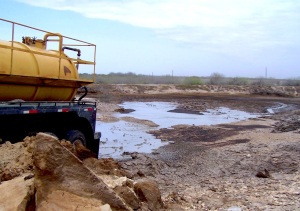 Two non-profit and non-partisan investigative journalism organizations, the Center for Public Integrity and InsideClimate News, have concluded through their joint investigation that the Texas Commission on Environmental Quality (TCEQ) and the Railroad Commission protect the oil and gas industry instead of the public whom they claim to serve.
Two non-profit and non-partisan investigative journalism organizations, the Center for Public Integrity and InsideClimate News, have concluded through their joint investigation that the Texas Commission on Environmental Quality (TCEQ) and the Railroad Commission protect the oil and gas industry instead of the public whom they claim to serve.
Fred Wright and Morris Kocurek were two oil and gas regulators working for the Texas Railroad Commission who received praise from their supervisors, promotions, and merit raises throughout their careers. But they may have done their jobs too well. They were fired in 2013 for what they believe to be their insistence in making sure oil and gas operators followed the rules and regulations in place to protect the public and the environment.
Wright was responsible for determining whether oil and gas wells were up to code to prevent groundwater contamination. He was often encouraged or coerced by his superiors to bend the rules, to say that operators had met compliance standards when they had not. In 2013, his superiors told him that complaints had been filed against him by the operators claiming he was “unreasonable to work with” and “does not attempt to offer solutions to bring them in compliance with commission rules”, citing that Fred’s methods for compliance would be “costly”. Wright’s boss at the time, Charlie Teague, insisted that Write approve oil and gas wells despite the fact that they were in violation of statewide rules.
As the enforcer of proper toxic waste disposal in the oil and gas industry, Kocurek faced very similar problems. He said his bosses made it clear that he was supposed to go easy on the industry. The violation notices Kocurek filed were usually processed very slowly and follow-up inspections were assigned to the more lenient inspectors. Eventually, Kocurek realized the influence that the industry had on its supposed regulators and his reports were all ignored. Violations would disappear after the right phone calls were made.
Documents obtained from the Railroad Commission through the open-records corroborate the stories of Mr. Wright and Mr. Kocurek. Wright has filed a civil lawsuit alleging wrongful termination. He has also filed a federal whistleblower complaint. Kocurek, on the other hand, hasn’t taken any legal action and would rather forget the whole thing.
According to InsideClimate News and the Center for Public Integrity, the Railroad Commission is controlled by three elected commissioners who have accepted nearly $3 million combined in campaign contributions from the industry during the 2012 and 2014 election cycles, according to data from the National Institute on Money in State Politics. In the case of the Railroad Commission and the TCEQ, money talks and it’s louder than the voice of Texas citizens.
Read their extensive report here: [http://books.insideclimatenews.org/fired]
Posted in Air Quality, Campaign Finance, Fracking, Good Government, Health, natural gas, Safety, TCEQ, Toxics, Water | Tagged corruption, Texas |
Denton’s fracking ban was approved by voters on November 4 and takes effect today on December 2. For many residents in the state of Texas, Denton’s recent ban on fracking is a watershed moment as Texas’ first ban against fracking within city limits. Denton’s city council promises to defend its ban despite opposition from the oil and gas industry as well as state officials who argue that this ban violates state law. This recent ban serves as a beacon of hope for Texas residents wanting to challenge the dominance of the oil and gas industry here in Texas. We are seeing more Texas towns seek fracking bans.
Reno, Texas had its first earthquake last year, confirmed by the U.S. Geological Survey, and then hundreds of earthquakes since which residents believe are due to fracking. On the outskirts of Reno lie disposable wells where millions of gallons of “water” are injected for hydraulic fracturing.
Barbara Brown, a resident of Reno, claims that sinkholes on her property and cracks on her front steps and above the door are because of fracking activity. She added, “They’re destroying our land, they’re ruining our health,” complaining of the noxious fumes produced by fracking. The town of Presidio, Texas is also trying to protect themselves against fracking. Their biggest concern is protecting their water source from fracking contamination.
Near fracking sites, the amount of toxic chemicals and carcinogens detected are tremendously high. These chemicals pose a significant public health risk according to Dr. David Carpenter, director of the Institute for Health and the Environment at the University at Albany-State University of New York. Researchers from the University of Washington and Yale University conducted a study that found that residents within 1 kilometer of a gas well had up to twice the rate of health problems per person compared to those who lived 2 kilometers away or further.
In October of this year, it was discovered that fracking sites injected about 3 billion gallons of fracking wastewater into California’s drinking-water and farm-irrigation aquifers. The Central Valley Water Board reported high levels of arsenic, thallium, and nitrates in the water supply [Arsenic is a carcinogen that weakens the immune system; thallium is used for rat poison]. Needless to say, this does not serve well for California as it continues to suffer an unprecedented drought.
Across the state, Texans are taking the example of Denton in using local democracy to counter the oil and gas industry which is destroying our environment and poisoning our water and the air we breathe.
Posted in Air Quality, Fracking, Good Government, Health, Water | Tagged Texas |
Join Public Citizen and other Environmental groups working in Austin for the 7th Annual Austin Green Holiday Party on December 3rd, a great running tradition for “green” networking in Austin.
Barr Mansion & the Shades of Green Radio Show Present
Seventh Annual Austin “Green” Holiday Party
Wednesday, December 3rd, 2014 6pm-10pm
Hosted by Barr Mansion
10463 Sprinkle Rd., Austin, TX 78754 (www.barrmansion.com)
Music by reggae artists Don Chani
Beverages generously provided by Blackstar Coop and Maine Root Sodas.
$30 Advance Tickets – Online Registration HERE
(Tickets include live music, all food and beverages. We will email you for your names and meal choices along with your registration confirmation.)
Join us for the Austin green mixer of the year, co-hosted by 11 area organizations, the Barr Mansion and Shades of Green, Austin’s live green talk radio show. For seven years running, Austin environmentalists have come together for holiday cheer at our Austin Green Holiday Party, a great annual opportunity for “cross-pollination” in the eco-community.
Enjoy a sit-down, family style, “Farm to Plate” dinner at the beautiful Barr Mansion, the nation’s first organic certified events facility, for an evening of great music, food, drink and mingling with leadership, members and friends of a wide variety of environmental and green building focused organizations.
The Menu- Choose from 2 meal options (we will email you for your names and meal choices along with your registration confirmation):
Entree Option #1 (Vegetarian)
- Vegan Vegetable Stacks with Cashew Hummus
Entree Option #2
- Wine Braised Chicken with Olives, Apricots and Almonds-with-
- Milk Punch Cocktails, Beer & Wine
- Mt. Tam Triple-Cream and Spicy Pickled Veggie Sourdough Crostini
- Artisan Wood-Fired Oven Breads
- Black-eyed Peas, Mushrooms and Arugula with Honey Pistachio Vinaigrette
- Braised Winter Greens topped with Egg
- Smashed Sweet Potato Crowns
- House-Made Christmas Candy
After dinner, enjoy music by Don Chani, whose music stays true to the bass-heavy, harmony laden roots reggae sound, while also incorporating rocksteady, ska, cumbia and dancehall.
We look forward to seeing you for a great evening of dancing, food, drink and socializing to kick off everyone’s 2014 holidays!
Posted in Global Warming | Tagged Texas |
Earlier today Senators supporting the Keystone XL pipeline on Tuesday came up one vote short of securing approval for the controversial project.
Fourteen Democrats joined all 45 Republican senators in voting for the pipeline, which needed 60 votes to pass. The finally tally was 59-41.
The House passed their version of the bill on Friday, 252-161-1, with 31 Democrats joining Republicans to pass it.
The Obama administration has said that it wants to wait for a full State Department review of the project’s effects – and it has been skeptical that the project would create the long-term job gains touted by the pipeline’s backers. in fact, during an interview November 16, 2014 on ABC’s “ThisWeek”, Russ Girling, current CEO of TransCanada, the company behind the Keystone XL Pipeline, conceded a claim by Reuters last year that, once constructed, the Keystone XL would produce as few as “FIFTY permanent jobs” which seems to have played out in the construction of the Southern leg of the pipeline from Cushing, OK to the the Texas Gulf Coast.
Posted in Global Warming | Tagged Texas |
The Electric Reliability Council of Texas (ERCOT) released a report yesterday titled “ERCOT Analysis of the Impacts of the Clean Power Plan” regarding the costs, benefits, and concerns of Texas’ compliance with Environmental Protection Agency’s (EPA) proposed Clean Power Plan. The Clean Power Plan, put forth by the EPA on June 2, 2014, would set new national carbon pollution standards, in an effort to combat the effects of climate change and air pollution. ERCOT, which operates the electric grid of Texas and manages the deregulated market for 75 percent of the state, concluded that there are reliability concerns and high costs associated with the changes necessary for the electric grid infrastructure and the shift to alternative low-carbon energy sources.
Environmental advocacy organizations such as the Environmental Defense Fund, the Sierra Club, and Public Citizen have begun commenting on this report, which they claim overstates the costs of compliance while understating the benefits of solar and energy efficiency. Not only does ERCOT’s report fail to take into account the affordability of solar energy and energy efficiency, it also neglects the steps that electric utility companies have already taken towards clean energy. Various electric utilities in Texas have been retiring inefficient coal plants and gas units in favor of adopting solar and wind energy projects. ERCOT’s own monthly interconnection report shows that more than 30,000 MW of solar and wind projects are in development stages. Texas’ energy storage and demand response capacities are also missing in the report. These two resources provide real-time reactive power when there is turbulence in wind and solar inputs, which would maintain a reliable power grid as Texas transitions to renewable energies.
The Clean Power Plan is a crucial step in reducing climate pollution and our dependency on dirty coal and other fossil fuels. The benefits of clean and affordable energy in Texas cannot be overstated. ERCOT should take the time to reevaluate the role of renewable energies in Texas’ future.
Download our presentation on our view of the plan here update New ERCOT Cost Estimates
Posted in Air Quality, Climate Change, Global Warming, Health, Renewables, solar, Utilities | Tagged carbon, climate change, Coal, EPA, ercot, public citizen texas, Texas |
The Electric Reliability Council of Texas (ERCOT) says that wind-powered generation recently set another record – albeit by 5 MW at 10:39 a.m. on Nov. 2, when instantaneous output reached 10,301 MW, providing 33.4% of the power within ERCOT. The old record, set on March 26, totaled 10,296 MW.
Of the total generation at the time, 975 MW came from wind generators on the Gulf Coast, while 9,326 MW came from other regions. Most came from West Texas, where transmission projects in the Competitive Renewable Energy Zones were recently completed to transport more power from that region to more populated areas of the state.
Posted in Global Warming | Tagged Texas |
U.S. President Barack Obama and Chinese President Xi Jinping just announced a joint plan to reduce the carbon emissions that threaten our world with catastrophic climate change.
Now we have an opportunity to turn this historic announcement into real action.
Step one is making sure the U.S. Environmental Protection Agency (EPA) knows the American people demand strong limits on climate-disrupting carbon pollution.
For a very limited time, the EPA is accepting public comments on its latest proposal to limit carbon emissions. Submit your comment in favor of the strongest possible rule before it’s too late.
The United States and China are the two countries with the highest carbon emissions.
This is the first time China has ever committed to reducing emissions. People worldwide are watching to see what the U.S. and China will do to back up this announcement and aggressively reduce emissions from power plants — the largest source of the carbon pollution that could doom our planet.
Here at home, the EPA’s proposed rule on carbon emissions is not strong enough, but the agency is giving everyday Americans a chance to weigh in before it finalizes the rules.
All eyes are on us. This announcement must be the catalyst for immediate, achievable action to prevent climate catastrophe.
Submit your comment to the EPA, right now, for stronger limits on carbon emissions.
Thank you for taking action today!
Posted in Global Warming | Tagged Texas |
Contributed by Adrian Shelley, Air Alliance Houston
Here’s the good news: Air quality in Houston is improving. 2014 will be the best ozone season in Houston since our city claimed the title of worst air in the nation nearly 20 years ago.
To be sure, this is cause for celebration. Ozone pollution, or smog, is a public health menace, causing everything from childhood asthma attacks to increased hospitalizations, cardiac arrest and premature death. Fewer ozone days mean fewer days when the health of Houstonians — especially our children — is at risk.
But recent improvements in air quality shouldn’t overshadow the work that still needs to be done. The oil and gas industry is using a good ozone season to tout a problematic message: There are no more air pollution problems in Houston, so we should all stop worrying about it.
In fact, we need to tighten federal standards and continue to improve our air quality. The Environmental Protection Agency is expected to do just that in December, but some Texas lawmakers see this as the work of an activist agency intent on killing jobs and crippling our nation’s mighty petrochemical industry. How else to explain recent bills by U.S. Reps. Randy Weber, R-Pearland, and Pete Olson, R-Sugar Land, that would gut the Clean Air Act and undo recent efforts to combat air pollution?
This legislation misunderstands how the Clean Air Act was intended to operate. The federal government sets air pollution standards that are necessary to protect public health. Considerations of cost, feasibility and impact on industry come later, when the states implement the standards.
Naturally, Texas lawmakers defer to the oil and gas industry when implementing federal standards. This may be why Houston has never met an ozone pollution standard. Low ozone this year has more to do with mild temperatures than any recent industry efforts. And one mild year cannot distract from the larger trend of gradually increasing temperatures.
If we can’t count on lower temperatures, we also can’t count on Texas industry to continue reducing pollution emissions. Although there’s been a downward trend over the last several decades, emissions of ozone precursor pollutants in Texas have been flat for the last five years. Additional gains will come only from state lawmakers working with the EPA to meet new standards.
More can and should be done in Texas. As Harris County’s population explodes, so does the number of cars on our roads. President Obama and the federal government have developed new vehicle emissions and fuel standards that will take effect in 2017. The state can do its part by fully funding state programs — like the Texas Emissions Reduction Plan and the Low Income Vehicle Repair and Assistance Program — that replace old, dirty automobiles. Together, these programs have left more than 1 billion unspent taxpayer dollars in state coffers. Texas must put this money to its intended use of reducing air pollution and protecting our health.
This is also not the time for Houston’s industry to bury its head in the sand. Our business leaders must do more than celebrate recent pollution reductions to which they contributed little. Low temperatures won’t protect our health forever. In addition to ozone, particulate matter, sulfur dioxide and hazardous air pollutants also plague Houston. The specter of climate change promises to complicate matters. The Obama administration is doubling down on natural gas and hydraulic fracturing, but recent evidence suggests these won’t provide any climate change benefits over coal.
Only aggressive efforts from industry to reduce air pollution and modernize our nation’s energy infrastructure will sustain our recent air quality gains. So while this year’s low ozone has us at Air Alliance Houston breathing a sigh of relief, we’re mindful of the work that still needs to be done. It’s our responsibility to continue to cut emissions and keep air pollution within federal standards. We must maintain the quality of our air to ensure our quality of life.
Posted in Air Quality | Tagged Texas |
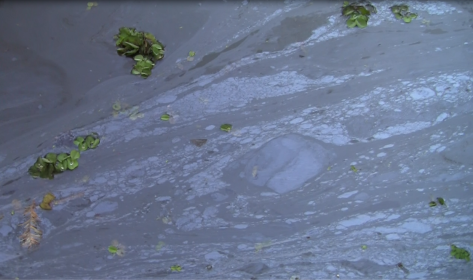
Last month a major pipeline oil spill near Mooringsport, Louisiana sent oil into a tributary of Caddo Lake, which straddles the border between Texas and Louisiana. Despite assurances from officials that oil has not reached Caddo Lake, the findings from an investigation by a community organization contradicts officials’ statements.

Sunoco Logistics Partners’ Mid-Valley Pipeline ruptured on October 13th and sent thousands of barrels of crude oil onto acres of private property and into Tete Bayou, a waterway that feeds into Caddo Lake. The oil spill prompted the evacuation of three households. Officials say the oil sheen stretches 4.2 miles and stops less than a mile away from the mouth of Caddo Lake, which is the largest natural lake in Texas and a major source of drinking water for thousands that live in the surrounding area.
Sunoco Logistics initially estimated that about 4,000 barrels, or 168,000 gallons, of oil leaked from the 20-inch pipeline, but earlier this week Sunoco revised the amount of oil spilled to 4,500 barrels, or 189,000 gallons. The Mid-Valley Pipeline is 65-years-old and stretches 1,000 miles from Longview, TX to refiners in Ohio and Michigan.
On Monday evening , Sunoco’s spokesperson Jeff Shields put out a statement that doubled-down on the companies position that oil had not reached the lake.
“The US Environmental Protection Agency and Sunoco Logistics today inspected absorbent booms that were placed in Caddo Lake as a protective measure against the spread of oil into the lake. Inspection of the booms by the EPA has found that the absorbent material was stained naturally from lake water but there was no oil in, on or around the booms.”
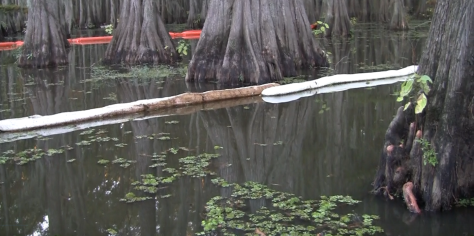
This statement was a response to allegations by Tar Sands Blockade, an anti-Keystone XL community organization, who visited the area last week and posted photos and video on there website of what appears to be oil stained boom where Tete Bayou feeds into Caddo Lake.
Kathy DaSilva, a member of Tar Sands Blockade, and a colleague canoed to the site last Wednesday to see if Sunoco’s claims about oil not reaching the lake were true, and they were surprised by what they found.
“We paddled in a canoe for 30 minutes to the mouth of Tete Bayou,” said DaSilva. “When we were crossing the lake we didn’t smell oil, but when we got out to cross some boom and walked around in the muck we started smelling it really bad. It was burning our nostrils.”
At the entrance of Caddo Lake, along the tree line, DaSilva documented absorbent booms tied to trees, but she says water was still able to go underneath some of the booms.

“Whether oil is at the top or the bottom, it’s in the lake,” said DaSilva. “The area we were in there were no water bugs, turtles, frogs, nothing. For four hours.”
Sunoco reports that nearly 500 dead animals have been collected. Most of which are fish, reptiles and crawfish. At least 41 animals have been cleaned and released.
“For them to say 500 dead animals, that’s only the one’s they’ve found,” said DaSilva. “The numbers are wildly inaccurate. The animals are not just dying in front of workers.”
One of the main concerns for DaSilva are catfish, because they are bottom feeders and a popular fish among anglers. If oil gets submerged and stuck on the bottom of the lake it could prove deadly for a variety of wildlife. So far, Sunoco has recovered about 3,500 barrels of oil from the bayou, but that number fluctuates because the oil is mixed with water.
The pair also brought a UV light with them that can detect hydrocarbons, DaSilva said, “and we saw bright purplish, blue dots that look like the oil has been broken up. Everything we are seeing is consistent with the use of dispersants.”
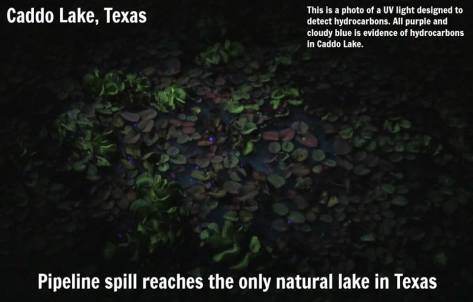
I emailed Sunoco’s spokesperson Jeff Shields about whether or not chemical dispersants were used in the clean up process, but he still has yet to reply.
Remediation and restoration of the spill is expected to take months, if not years. Although the majority of the oil has been collected, there’s no doubt that some of the oil has sunk into the mud and crawfish holes, making it extremely difficult to clean.
This is the second major oil spill from the Mid-Valley Pipeline this year alone. A 20,000 gallon oil spill happened near Cincinnati, Ohio earlier this March in a nature preserve. Sunoco is still in the process of remediation for that spill.
Despite the fact that the cause of the spill remains unknown, the Pipeline and Hazardous Material Safety Administration, PHMSA, the federal agency that regulates pipelines, allowed Sunoco to restart the pipeline and resume operation at 80 percent of maximum operating pressure.
For DaSilva, Caddo Lake is special. She has been going there since the 1970’s when she was attending college at Stephen F. Austin University, and she says it is her favorite place to canoe.
“They’ve already restarted the pipeline although they don’t know how it leaked,” said DaSilva. “It’s frustrating because regular people like us shouldn’t have to be doing this. We don’t have an agenda other than not seeing a place we love destroyed.”
Click here to see some of the footage Max shot of the spill.
Posted in Global Warming | Tagged Texas |
The Texas Board of Education is scheduled to meet from November 18-21, 2014 to vote on the approval of the textbooks proposed by publishers for Texas schools. These Texas textbooks have drawn national criticism for providing blatantly incorrect information about climate change and environmental issues. This isn’t a first for the Texas Board of Education, which has come into the national spotlight multiple times in the past due to internal disagreements about creationism and the causes of the civil war, among others.
 The National Center for Science Education (NCSE), in response to the proposed textbooks, released a report in September titled, “Analysis of Climate Change in Proposed Social Studies Textbooks for Texas Public Schools”. In this report they cite multiple instances where the textbooks were misleading or blatantly false in regards to climate change.
The National Center for Science Education (NCSE), in response to the proposed textbooks, released a report in September titled, “Analysis of Climate Change in Proposed Social Studies Textbooks for Texas Public Schools”. In this report they cite multiple instances where the textbooks were misleading or blatantly false in regards to climate change.
Several of the textbooks say that “scientists disagree on what is causing climate change”. The NCSE responds that, “Scientists do not disagree about what is causing climate change, the vast majority (97% of climate papers and actively publishing climatologists (again 97%) agree that human activity is responsible.”
In one instance the position of the Intergovernmental Panel on Climate Change (IPCC) that climate change is due to human activities is contrasted with the opposing opinion of two employees of The Heartland Institute, neither of whom are scientists, who claim that scientists disagree on the cause. The Heartland Institute is a conservative think tank that denies climate change, is funded in part by the Koch brothers, and is considered a shill for the oil industries.
The IPCC is a highly regarded international science organization that won a Nobel Peace Prize in 2007 “for their efforts to build up and disseminate greater knowledge about man-made climate change, and to lay the foundations for the measures that are needed to counteract such change”. The IPCC recently released a comprehensive report linking climate change to greenhouse gas emissions, saying that it is “extremely likely” that anthropogenic greenhouse gas emissions and other anthropogenic drivers are the dominant cause of the observed warming.
Besides environmental issues, the proposed social studies curricula are also regarded by some critics as promoting tea party ideology, downplaying segregation, and mocking affirmative action. The chairwoman of the History department at the University of Texas at Austin, Jacqueline Jones, focused on the historical inaccuracies of the proposed textbooks, citing “omissions of facts” and saying that they revealed “ideological biases that are either outside the boundaries of established, mainstream scholarship, or just plain wrong.”
A spokesperson for the textbook company, McGraw-Hill Publishing, said that they were simply fulfilling the state education requirements. The errors stem from curriculum standards set in 2010, meaning that they’re unlikely to be corrected. But we should expect more from our Board of Education.
 Fellow Texans, please contact your respective Board of Education member and ask them not to teach Texas children misinformation on climate change, as well as the many other inaccuracies in other issue areas. To get involved, the Texas Freedom Network has a campaign to reform the State Board of Education.
Fellow Texans, please contact your respective Board of Education member and ask them not to teach Texas children misinformation on climate change, as well as the many other inaccuracies in other issue areas. To get involved, the Texas Freedom Network has a campaign to reform the State Board of Education.
Posted in Climate Change, Global Warming, Good Government | Tagged Texas, Texas Board of Education, Texas textbooks |
Amid big losses for the more progressive candidates on the Texas statewide ballot, Denton residents voted to ban fracking within city limits. This is the first fracking ban in Texas. The ballot language was:
SHALL AN ORDINANCE BE ENACTED PROHIBITING, WITHIN THE CORPORATE LIMITS OF THE CITY OF DENTON, TEXAS, HYDRAULIC FRACTURING, A WELL STIMULATION PROCESS INVOLVING THE USE OF WATER, SAND AND/OR CHEMICAL ADDITIVES PUMPED UNDER HIGH PRESSURE TO FRACTURE SUBSURFACE NON-POROUS ROCK FORMATIONS SUCH AS SHALE TO IMPROVE THE FLOW OF NATURAL GAS, OIL, OR OTHER HYDROCARBONS INTO THE WELL, WITH SUBSEQUENT HIGH RATE, EXTENDED FLOWBACK TO EXPEL FRACTURE FLUIDS AND SOLIDS?
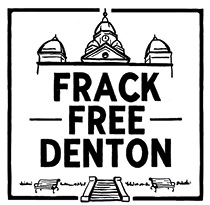 Clearly, the people of Denton were convinced that this is the best way to protect their health, safety and quality of life. The science strongly supports this view. The environmental and health impacts of fracking are numerous, severe and some are long lasting. Releases of toxic pollutants into the air are making people sick in the short term and causing long-term health impacts. Water pollution from fracking operations poses health risks and hardship on people whose water supply is destroyed. Billions of gallons of water are removed from the hydrological cycle when Texas is already struggling to meet its water needs. Ejection wells in some areas are causing earthquakes. On top of all that, methane leakage from fracking, natural gas processing, and transportation of natural gas is contributing to climate change.
Clearly, the people of Denton were convinced that this is the best way to protect their health, safety and quality of life. The science strongly supports this view. The environmental and health impacts of fracking are numerous, severe and some are long lasting. Releases of toxic pollutants into the air are making people sick in the short term and causing long-term health impacts. Water pollution from fracking operations poses health risks and hardship on people whose water supply is destroyed. Billions of gallons of water are removed from the hydrological cycle when Texas is already struggling to meet its water needs. Ejection wells in some areas are causing earthquakes. On top of all that, methane leakage from fracking, natural gas processing, and transportation of natural gas is contributing to climate change.
There will be legal challenges to the Denton fracking ban, and possibly legislative action to try to roll it back. That’s where the rest of us who care about protecting human health and the environment come in. We can’t leave Denton residents to fight alone. This is not a problem that is unique to them, and it’s one that we all contribute to by using natural gas. Our individual and community decisions are impacting real people in serious ways. Natural gas is not a clean or harmless energy choice. Its use should be minimized as much as possible. That includes moving away from natural gas-fired power plants, not building more of them.
Even if Denton’s fracking ban stands up to legal challenges and avoids legislative destruction, many communities in Texas will continue to suffer the impacts of fracking. Denton has the benefit of being an urban area with a significant student population. The Eagle Ford area, on the other hand, is largely rural and less affluent and residents find themselves powerless against the rampant fracking around them. The community advocates who worked to pass the fracking ban in Denton deserve an incredible amount of credit for their work, as do Denton residents for making the smart decision to protect themselves. Now we must not forget about those left on the front lines of fracking who are less able to organize to protect their health, their land, our shared water resources, and the climate. We need a Sharon Wilson for every fracked community.
Posted in Air Quality, Climate Change, Fracking, Global Warming, natural gas, Safety | Tagged Texas |
Update
This election has broad implications for Texas, regardless of the outcomes. With almost all of the statewide races expected to turn over due to the state’s governor stepping down after 12 years in that office, all of the statewide offices had incumbents and new candidates vying to move up the chain. But some cities also have races and other measures on their ballots that will dramatically change things.
Austin, is moving from a 7 member council (including the mayor) with all members elected at large to a 10 member council with members elected within a geographical district and a mayor elected at large. This means the entire governing body of the City of Austin will be changing after today and their voters are facing a slate of 78 candidates on their ballot.
Update on Denton Fracking Ban measure -in yesterday’s election the ban passed with nearly 60 percent of the vote. The ban’s passage will almost certainly trigger litigation, with energy companies and royalty owners arguing that state drilling regulations trump Denton’s rights and that the city was confiscating mineral rights, which have long been dominant in Texas law.
Just as important is a measure on the Denton ballot. In 2010, Denton citizens got the city to adopt an ordinance that required a minimum of 1,000 feet between a gas well and schools, homes, churches, parks and other “protected” land uses, but just before passing the ordinance, the council added an amendment that allows new homes to be built within 250 feet of land platted for drilling, where companies can re-drill and re-frack existing wells. Since the passage of the ordinance, Denton residents realized that increasing setback requirements wouldn’t be enough and started collecting signatures to force the City Council to vote on a fracking ban which then got kicked to the voters. The referendum required 596 signatures from registered voters—or one-quarter of the number of people who voted in the last local election, nearly 2,000 verified signatures were collected a full month before the deadline. If this measure passes today, Denton will be the first city in Texas to ban fracking. This ballot measure will not only have major implications for the city of Denton is poised to have ripple effects throughout Texas and beyond the state’s borders. This is one to watch.
Posted in Air Quality, Fracking, Good Government, Redistricting | Tagged Texas |

